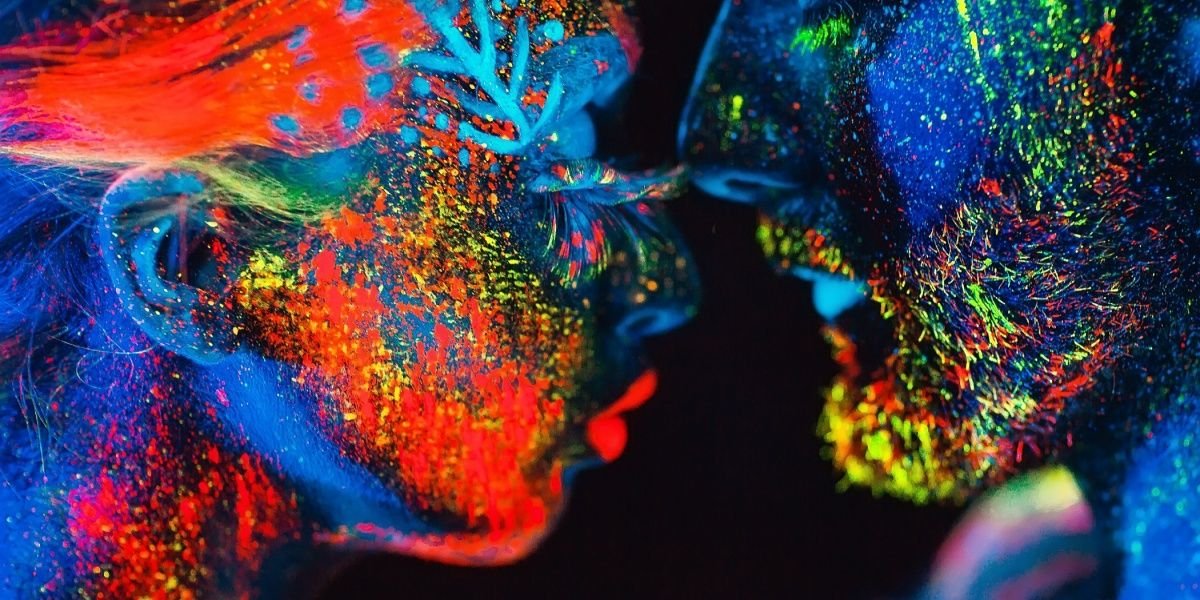Gamma-hydroxybutyrate (GHB), although more known for illicit use, is prescribed for narcolepsy (marketed as sodium oxybate or Xyrem) and has shown potential for treating alcohol use disorder (AUD).[2] However, its use for AUD is controversial due to the risk of dependence. [2]
GHB and its analog Gamma-butyrolactone (GBL) have become increasingly popular in recreational settings, especially in sexualized drug use or chemsex settings among men who have sex with men.[3] Furthermore, GHB is used as a club drug or as an alternative to alcohol due to its unique pharmacological actions of producing euphoria, relaxation, and sedation. [4] Due to its short half-life (20-30 minutes), frequent use is necessary to sustain its effects, [5] contributing to its high dependence potential.
GHB withdrawal is widely regarded as one of the most severe among central nervous system (CNS) depressants. GHB withdrawal symptoms begin within hours after the last dose, driven by the drug’s fast metabolism. [5] The hyperadrenergic state, a state of uncomfortable excitability seen during GHB withdrawal, reflects a rebound from the drug’s suppression of neural excitability.
- GHB withdrawal symptoms include physical (tremors, sweating, seizures, high blood pressure) and psychological effects (anxiety, paranoia, hallucinations, and cravings), with the potential for severe complications like delirium tremens.
- Withdrawal symptoms begin within 1–6 hours after the last dose, peak at 48–72 hours, and last 9–10 days on average, with some lingering symptoms that may last for weeks to months.
- Withdrawal is managed with medical supervision, using medications like benzodiazepines, baclofen, or pharmaceutical GHB tapering, with supportive care to address potential dehydration, agitation, and other complications.

What is GHB withdrawal?
GHB withdrawal syndrome (GWS) can occur after stopping the use of GHB or its analogs ( like GBL) and is similar to withdrawal syndromes seen with alcohol and benzodiazepines. Because GHB has a short duration of action and is rapidly eliminated from the body, withdrawal symptoms can develop quickly within 1 to 6 hours after the last dose.[5] These symptoms tend to escalate rapidly.
The fast oral absorption and short half-life of GHB explain why regular users often take it every 1 to 4 hours to avoid withdrawal. [6] Withdrawal symptoms can last anywhere from 3 to 21 days, with an average duration of 9 to 10 days. [5]
Certain factors increase the risk of withdrawal, including high and frequent doses. For example, using more than 4 mL (milliliter) of GBL daily, taking GHB/GBL more than 4–6 times daily for 2–4 weeks, or daily doses of at least 18 g of GHB or 10 g of GBL are significant predictors.[5][7] Previous withdrawal episodes and polydrug use also increase the likelihood of GWS.
Most chronic users experience withdrawal symptoms after around 18 months of regular use, although symptoms can appear as early as 8–13 weeks in some cases.[5] GHB withdrawal symptoms develop much sooner after stopping the drug compared to those seen in alcohol withdrawal. In addition, GHB withdrawal might lead to delirium tremens (DT), a life-threatening condition usually associated with alcohol withdrawal.
Why GHB withdrawal requires medical supervision
GHB withdrawal requires medical supervision due to its rapid onset, severe symptoms, and life-threatening risks.[5][8] Without proper care, individuals may experience seizures, dangerous agitation, complications like kidney damage or respiratory issues, and in some cases, even death. [8][9][10] Withdrawal symptoms, especially cravings, can also increase the likelihood of relapse. [12]
Medical professionals can provide medications, fluid and electrolyte replacement, nutritional support, and continuous monitoring to manage symptoms. [8][11]
Symptoms of GHB withdrawal
GHB withdrawal causes many complex symptoms due to its effects on the CNS. These symptoms can be mild or severe, with some, if not most, requiring medical intervention. The symptoms can be categorized into physical and psychological.
Physical symptoms: [8][11][12]
- Tremors
- Sweating
- Muscle cramps and pain
- Seizures
- Nausea and vomiting
- High blood pressure
- Increased heart rate
- Hyperthermia
- Headaches
- Sleep disturbances
- Respiratory changes and breathing difficulty
- Fatigue and lethargy
Psychological symptoms: [8][9][11]
- Anxiety and panic attacks
- Agitation and irritability
- Paranoia
- Hallucinations
- Difficulty thinking clearly or concentrating
- Mood swings
- Delirium – severe confusion, often with hallucinations or disorientation.
- Depression
- Cravings
- Psychosis
Initial GHB withdrawal symptoms
GHB withdrawal symptoms typically begin within hours after the last dose due to its short half-life. Physical symptoms include shaking, particularly in the hands, along with sweating, nausea, and vomiting. Individuals may also experience an increased heart rate (tachycardia), elevated blood pressure, and muscle stiffness or cramps, which contribute to physical discomfort during withdrawal. [8][11][12]
Psychological symptoms can be equally distressing. Many individuals report feelings of unease or heightened anxiety, making it difficult to stay calm or relaxed. Sleep disturbances, including difficulty falling or staying asleep and experiencing vivid dreams, are common. Additionally, intense cravings for GHB often occur, further complicating the withdrawal process.[8][11][12]
Acute GHB withdrawal symptoms
Acute GHB withdrawal symptoms peak within 48–72 hours after stopping and can last up to 10 days, with the severity depending on the extent of use and individual factors. These symptoms can be life-threatening and require medical intervention.
Physical symptoms during the acute phase are often severe and include a rapid heart rate (tachycardia), significantly elevated blood pressure, and profuse sweating (diaphoresis). Individuals may experience seizures and muscle breakdown (rhabdomyolysis), which can cause kidney damage. Dehydration is also common due to excessive vomiting, sweating, and inadequate fluid intake. [11][13]
Psychological symptoms can be equally dangerous. Severe agitation and paranoia may lead to heightened restlessness and mistrust of others. Hallucinations, both auditory and visual, often occur alongside confusion and disorientation. In extreme cases, withdrawal can cause delirium, a serious mental disturbance that may escalate into life-threatening conditions without proper care. [13][14]
Post-acute and long-term symptoms
Post-acute withdrawal from GHB can present with lingering symptoms that persist well beyond the acute withdrawal phase. These symptoms may last weeks to months. Post-acute symptoms include persistent fatigue and disrupted sleep patterns, as well as anxiety and mood swings. Many individuals report lasting depressive states, intense cravings for GHB, and difficulty concentrating or remembering things. [12]
GHB withdrawal timeline
This table summarizes the various phases of withdrawal experienced by individuals who abruptly discontinue the use of GHB.
| Phase | Timing | Primary Symptoms |
|---|---|---|
| Onset/Early Phase | 1–6 hours | Tremors, sweating, mild high blood pressure, anxiety, cravings, interrupted sleep pattern. |
| Peak Withdrawal | 48–72 hours | Severe elevated heart rate, high blood pressure, agitation, hallucinations, seizures, delirium. |
| Extended Phase | 3–10 days | Fatigue, lingering anxiety, cravings, brain fog, sleep difficulty. |
| Protracted Withdrawal | Weeks to months | Tiredness, anxiety, depressive states, difficulty concentrating and thinking. |
Treatment and management of GHB withdrawal
Treatment and management of GHB withdrawal focus on easing withdrawal symptoms and preventing medical complications.
Doctors typically start by administering benzodiazepines like diazepam (Valium), which help calm the nervous system and reduce symptoms like anxiety, tremors, and delirium. However, and rarely, in severe cases, the body may not respond to benzodiazepines alone, and additional treatments, like phenobarbital (a barbiturate), may be used to control symptoms. In some extreme cases, a temporary medically induced coma with medications like thiopental has been used successfully when other treatments failed. [15][16]
Another promising option is baclofen, which works on the same brain receptors affected by GHB. Baclofen can be used either alongside benzodiazepines or by itself to manage withdrawal symptoms more safely, particularly in cases where large doses of benzodiazepines might be risky. [17]
In some instances, antipsychotics are used to manage severe psychiatric withdrawal symptoms.
Then, there are cases where pharmaceutical GHB is used to taper the dose gradually. This method has been shown to reduce withdrawal severity and complications compared to benzodiazepines alone. It does come with challenges, and one of them is that it requires specialized care and expertise. [18]
Recovery support and preventing relapse for GHB
After completing detox and therapy (either in-patient or out-patient), individuals need long-term support to maintain sobriety. This can include group therapy, 12-step programs like Narcotics Anonymous (NA), or ongoing counseling. Having a long-term recovery plan helps people stay on track and avoid the triggers that may lead them back to GHB use. Furthermore, having a strong support structure is highly advantageous.


-guide-detail.jpg?v=1722502642)
-guide-detail.jpg?v=1722502481)
